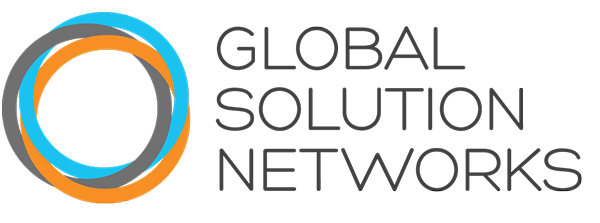10 Types of Global Solution Networks
 A literature review and initial investigation produced the first comprehensive taxonomy to describe these new networks. We used a functional perspective to identify the different “species” of problem-solving networks. The taxonomy is “comprehensive” in that all networks can be included. The categories are not completely mutually exclusive and any given network may overlap with other networks types. However, any network can be said to fall primarily or principally in one of the categories. Networks can also change. It is important to bear in mind the possibility that a network’s purpose can shift (say, from knowledge to advocacy, for example) over time. This is a good topic for further investigation. Understanding the conditions under which networks undergo what might be called “purpose shifts” is key to understanding their social dynamics. The 10 network categories, with examples, are:
A literature review and initial investigation produced the first comprehensive taxonomy to describe these new networks. We used a functional perspective to identify the different “species” of problem-solving networks. The taxonomy is “comprehensive” in that all networks can be included. The categories are not completely mutually exclusive and any given network may overlap with other networks types. However, any network can be said to fall primarily or principally in one of the categories. Networks can also change. It is important to bear in mind the possibility that a network’s purpose can shift (say, from knowledge to advocacy, for example) over time. This is a good topic for further investigation. Understanding the conditions under which networks undergo what might be called “purpose shifts” is key to understanding their social dynamics. The 10 network categories, with examples, are:
A TAXONOMY OF MULTI-STAKEHOLDER NETWORKS FOR GLOBAL PROBLEM SOLVING |
||
|---|---|---|
Network Type |
Description |
Examples |
| Knowledge Networks | The primary function of Knowledge Networks is to develop new thinking, research, ideas and policies that can be helpful in solving global problems. Their emphasis is on the creation of new ideas, not their advocacy. | Stockholm International Peace Research Institute; Global Network for Women and Children’s Health Research, Wikipedia, TED. |
| Operational and Delivery Networks | This class of networks actually delivers the change it seeks, supplementing or even bypassing the efforts of traditional institutions. | Crisis Commons, Kiva, 350.org, The Standby Task Force, Digital Democracy, The Red Cross, World Wildlife Fund, Bill and Melinda Gates Foundation Global Health Program, Medicines for Malaria Venture, The Microcredit Summit Campaign |
| Policy Networks | Sometimes networks create government policy, even though they may consist of non-governmental players. Policy Networks may or may not be created or even encouraged by formal governments or government institutions. Some policy networks support policy development or create an alternative for policy. Policy networks also exist to create and encourage discussions on policy issues. | The Internet Governance Forum, International Competition Network, The PRI (Principles for Responsible Investment) |
| Advocacy Networks | Advocacy Networks seek to change the agenda or policies of governments, corporations or other institutions. | Avaaz.org, Keep a Child Alive, Conscious Capitalism (advocates to corporations). Hundreds of these networks are listed at World Advocacy.com. |
| Watchdog Networks | These networks scrutinize institutions to ensure they behave appropriately. Topics range from human rights, corruption, and the environment to financial services. | Human Rights Watch, The Environmental Working Group, Amnesty International, The Global Reporting Initiative |
| Platforms | Some networks seek to provide platforms for other networks to organize. | Ushahidi, Challenge Post, Change.org, seToolbelt, Code for America, thesojo.net |
| Global Standards Networks | Non-state based organizations that develop technical specifications and standards for virtually anything, including standards for the Internet itself. | Internet Engineering Task Force (IETF), World Wide Web Consortium |
| Governance Networks | These are multi-stakeholder networks and have achieved or been granted the right and responsibility of non-institutional global governance. | Internet Corporation for Assigned Names and Numbers, International Organization of Securities Commissions, Marine Stewardship Council, Forest Stewardship Council, The Kimberly Process Certification Scheme |
| Networked Institutions | Some networks provide such a wide range of capabilities they could be described as Networked Institutions. They are not state-based but rather true multi-stakeholder networks. The value they generate can range from knowledge generation, advocacy and policy development to actual delivery of solutions to global problems. | The World Economic Forum, The Clinton Global Initiative, The Global Water Partnership |
| Diasporas | Diasporas are global communities formed by people dispersed from their ancestral lands but who share a common culture and strong identity with their homeland. Thanks to the Internet these people and their affiliated organizations can now collaborate in multi-stakeholder networks. One of the functions of many of today’s diasporas is to address and help solve common, global problems. | OneVietnam Network, International Diaspora Engagement Alliance, African Idea Marketplace |
For greater detail and an in-depth look at examples of network types, download Don Tapscott’s whitepaper, Global Solution Networks: Understanding the New Multi-Stakeholder Models for Global Cooperation, Problem Solving and Governance, 2012.

